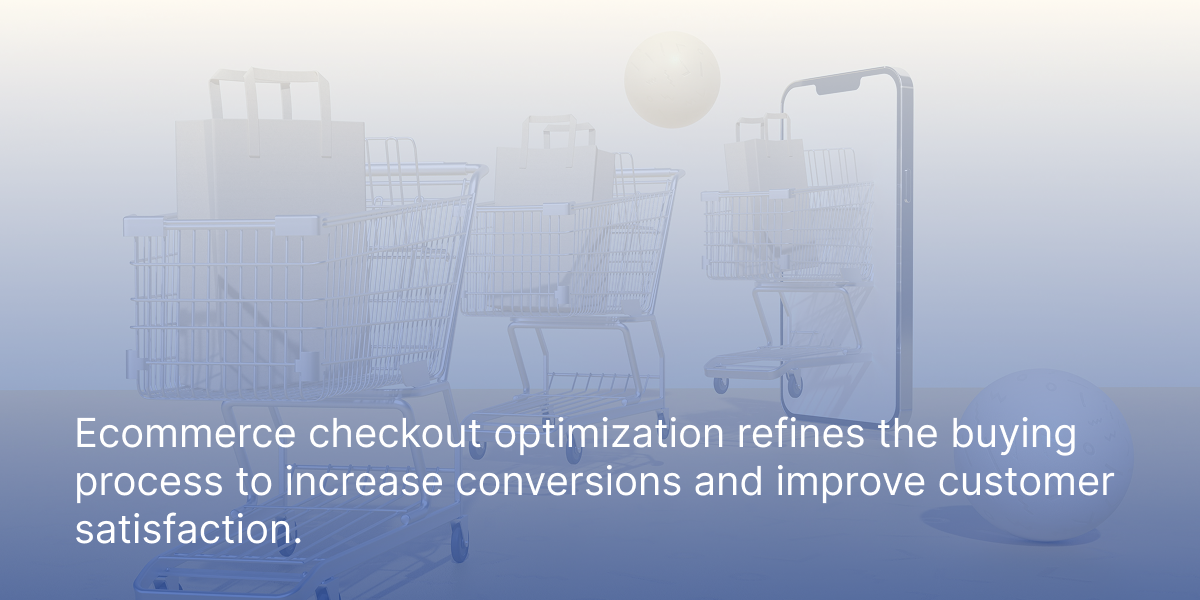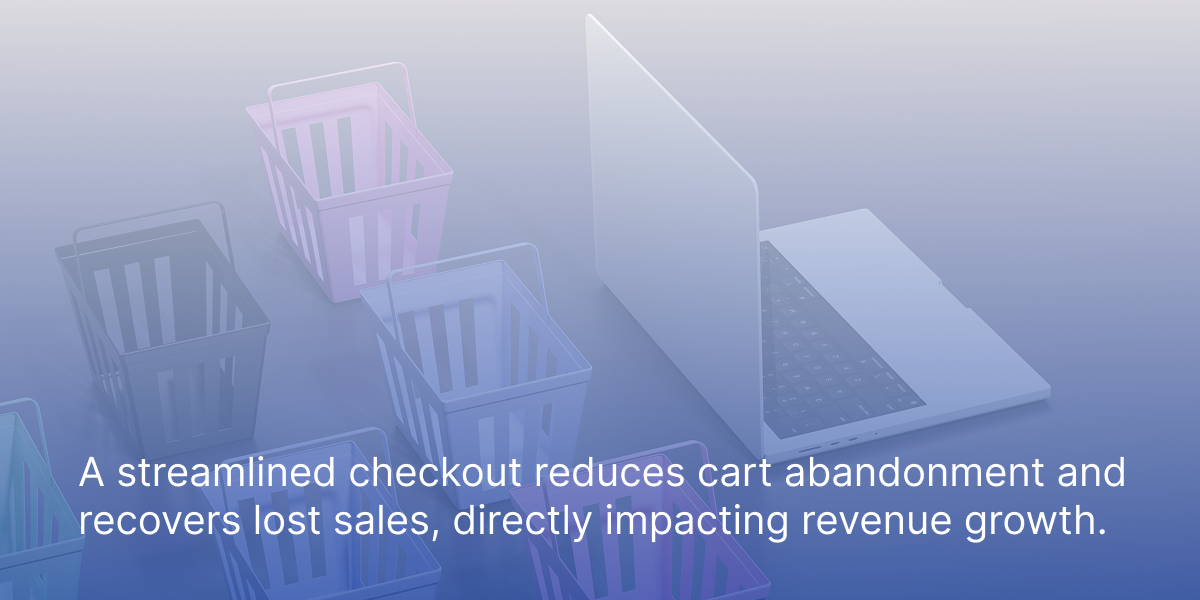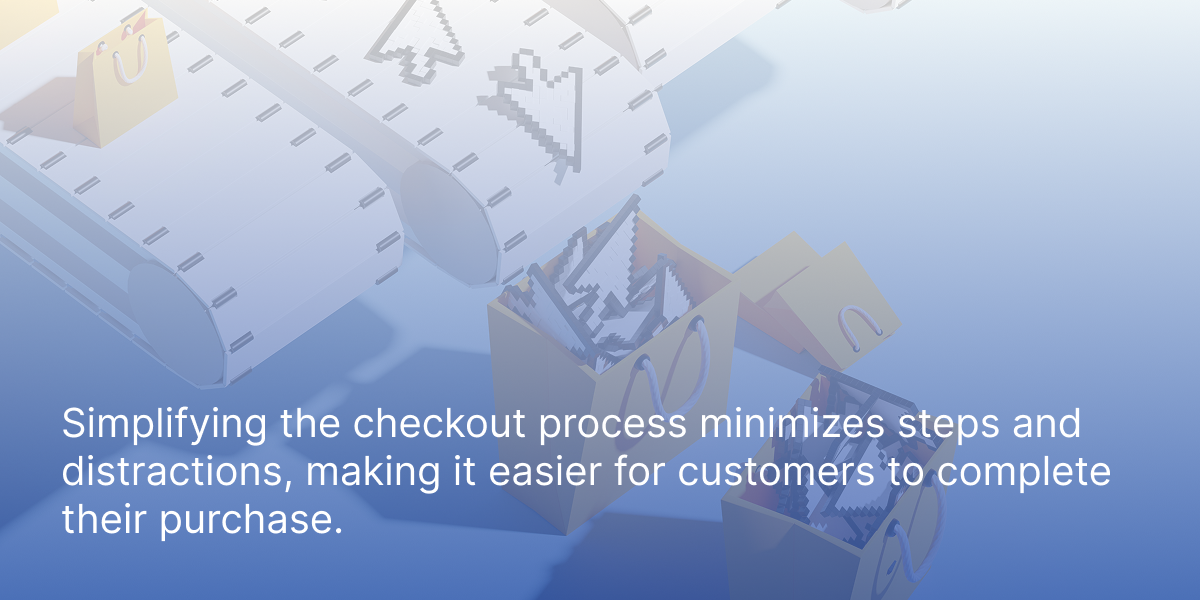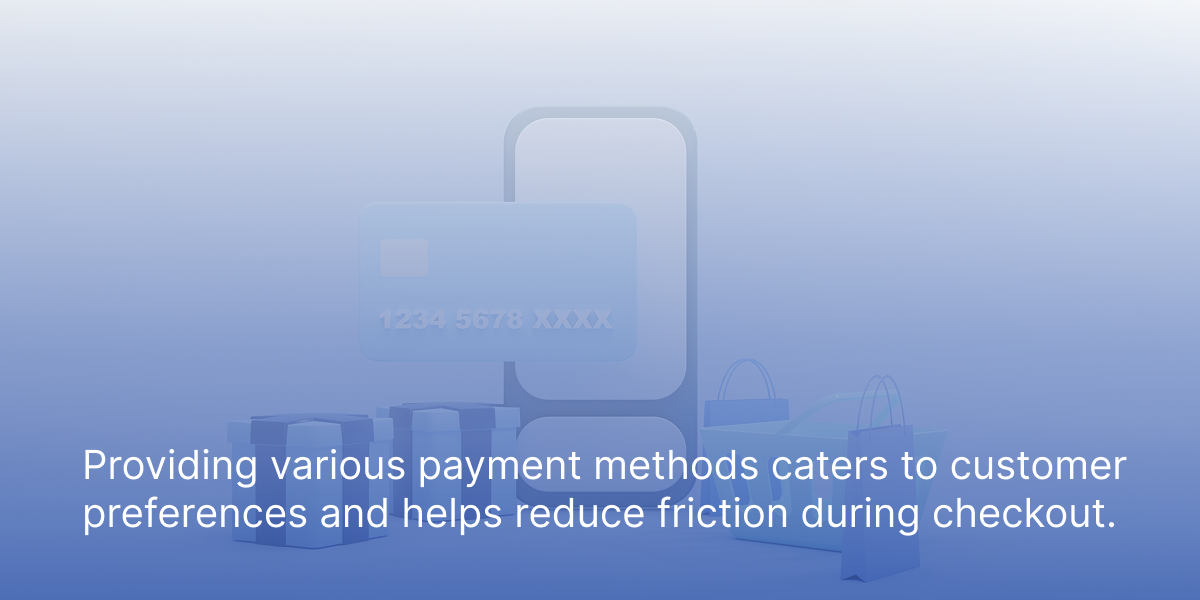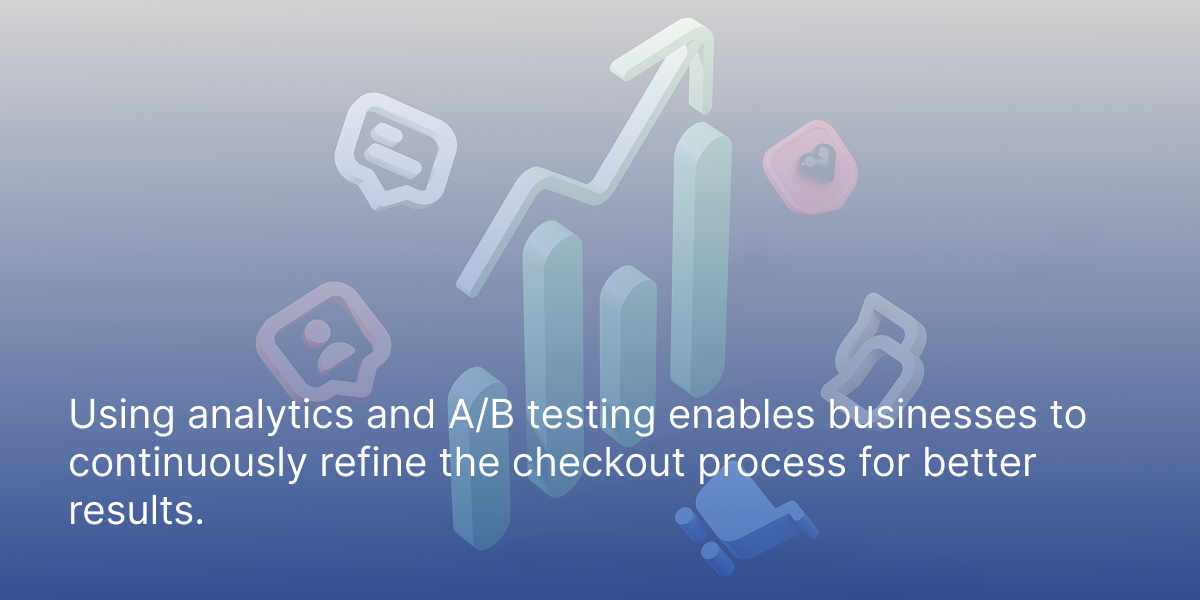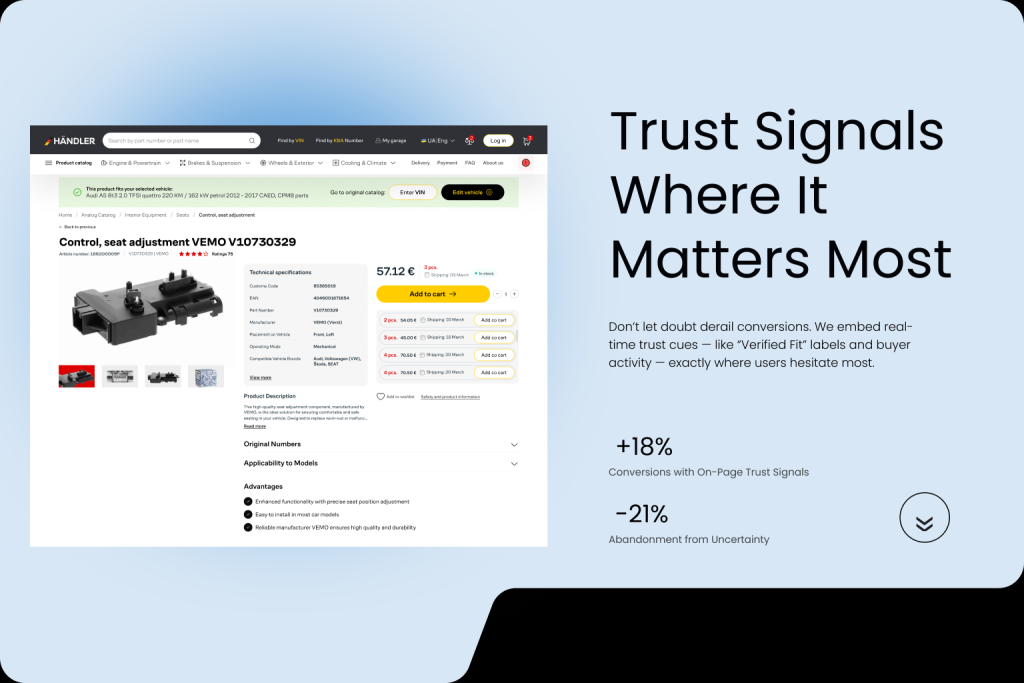Is your checkout process losing you sales? Ecommerce checkout optimization can fix that. This guide will show you how to streamline your checkout process to reduce cart abandonment and boost conversions.
Key Takeaways
- Optimizing the checkout process is essential to reduce cart abandonment and recover significant lost sales, boosting overall revenue and customer retention.
- Key strategies for online checkout process optimization include simplifying the process, enhancing trust and security, offering diverse payment options, and ensuring mobile-friendliness.
- Utilizing real-time customer support and analytics tools can provide critical insights for improving the checkout experience and boosting conversion rates.
Understanding Ecommerce Checkout Optimization
What is Ecommerce Checkout Optimization, and Why is it Important?
Ecommerce checkout optimization is the process of refining the checkout experience to make it as smooth and efficient as possible for customers. This involves streamlining the checkout process, reducing unnecessary steps, and ensuring a seamless experience across various devices and platforms. The goal is to increase conversions, reduce cart abandonment rates, and enhance overall customer satisfaction.
Checkout optimization is crucial for ecommerce businesses because it directly impacts their bottom line. A well-optimized checkout process can significantly boost revenue by converting more visitors into paying customers. Additionally, a smooth and hassle-free checkout experience fosters customer loyalty, encouraging repeat purchases and long-term customer relationships. In today’s competitive ecommerce landscape, optimizing the checkout process is not just an option but a necessity for sustained success.
Why Ecommerce Checkout Optimization is Crucial
Checkout optimization is more than just a buzzword; it’s a critical aspect of ecommerce that can make or break your sales. Studies show that a streamlined checkout process optimization can significantly reduce cart abandonment rates, with complexity causing 17% of shoppers to abandon their purchase. Forcing account creation before purchase can lead to cart abandonment, so offering guest checkout options is crucial. Addressing pain points in the checkout flow can help businesses recover up to $260 billion in lost sales across the US and EU markets.
Read more in our article
How to Improve Your E-Commerce Conversion Rates: Expert Tips
Moreover, enhancing the checkout experience not only boosts conversion rates but also improves customer retention and overall revenue. The average order value can be increased through effective tactics like cross-selling and upselling during the checkout process. In essence, a well-optimized checkout process is indispensable for any ecommerce site aiming to thrive in today’s market.
Simplify the Checkout Process
A simplified checkout process is the cornerstone of a successful ecommerce strategy. Streamlining the checkout flow can significantly lower cart abandonment rates and improve user experience. Minimizing distractions and focusing on essential steps creates a seamless user experience that encourages purchases. Ensuring the shipping address is autofilled through services like Google Autocomplete can further streamline the process.
Consider these specific strategies to simplify the complicated checkout process.
Minimize Form Fields
Reducing the number of form fields during checkout is crucial for decreasing user frustration and abandonment. The recommended number of form fields for an ecommerce checkout is eight, focusing on essential information only.
Introducing a checkbox that opens an additional field if the billing address differs from the delivery address can further streamline the process. Optimizing form fields enhances user satisfaction and maintains focus on critical data entries.
Enable Guest Checkout
Allowing guest checkout can significantly reduce buyers’ hesitance and increase overall sales. A significant percentage of consumers abandon their carts if they are required to sign up before purchasing. Enabling guest checkout provides a smoother experience and reduces friction.
Ensure the guest checkout option is easy to locate, especially on mobile devices where 60% of shoppers struggle to find it. Delaying registration until after the purchase enhances the checkout experience and reduces cart abandonment.
Use Smart Form Filling
Implementing smart form filling features like address validation and auto-fill options can streamline the checkout process and enhance overall efficiency. Partnerships with technology providers like Loqate can support advanced address validation, reducing errors and speeding up data entry.
These features contribute to a seamless user experience, ultimately encouraging more purchases.
Enhance Trust and Security
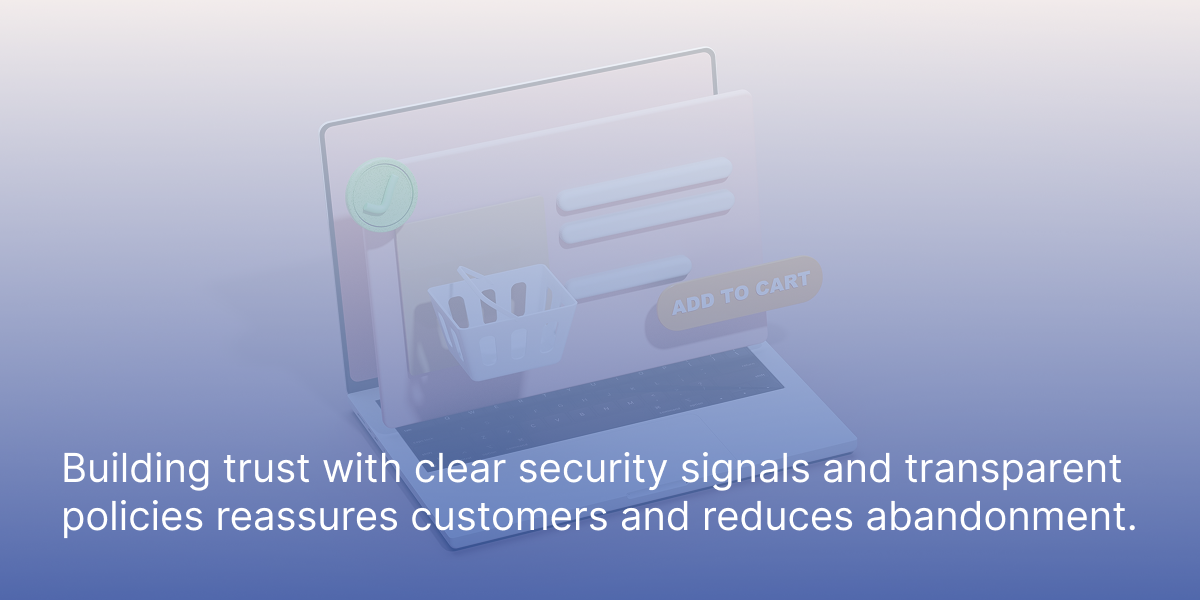
Consider these specific strategies to achieve this.
Display Security Badges
Displaying security badges plays a critical role in reassuring customers about the safety of their payment information. Trust signals such as credit card logos and other recognized symbols should be prominently displayed on checkout pages.
Compliance with the Payment Card Industry Data Security Standard (PCI DSS) enhances online security and boosts customer confidence.
Provide Transparent Policies
Clearly communicating return, shipping, and privacy policies is crucial for customer understanding and trust. Links to essential policies should be visible to aid customers during the checkout process. Displaying a phone number provides customers with direct support options, enhancing their confidence in the purchase.
Transparent policies and accessible support build overall customer confidence and satisfaction during the checkout process. Ensuring that customers can easily find and understand these policies is a key aspect of building trust and reducing cart abandonment.
Offer Diverse Payment Options
Offering multiple payment options is essential to cater to a broader audience and reduce the chances of cart abandonment. Diversifying payment methods enhances market reach and improves customer experience.
Accommodating a variety of preferred payment methods, such as credit cards, cryptocurrencies, and digital wallets, can significantly enhance customer satisfaction and drive sales.
Consider these strategies for including diverse payment options.
Include Digital Wallets
Digital wallets have seen a substantial increase in use, with transactions in this category rising 62% in Q3 2023. Digital wallets such as Apple Pay and Google Pay have become popular options for fast and secure transactions in ecommerce. Offering digital wallets facilitates quicker checkouts and reduces friction, ultimately enhancing the customer experience.
Support Alternative Payment Methods
Alternative payment methods, such as Buy Now, Pay Later options, are becoming increasingly favored by consumers for their flexibility. These methods cater to various customer preferences and can significantly reduce cart abandonment by providing more payment options and streamlining the payment process, making them a preferred payment method.
Offering alternative payment methods ensures businesses meet the diverse needs of their customers.
Flexible Shipping Options
Offer Multiple Shipping Choices
Offering multiple shipping choices is essential for meeting the diverse needs and preferences of your customers. By providing options such as standard shipping, expedited shipping, same-day delivery, and in-store pickup, you cater to different urgency levels and convenience preferences. This flexibility can significantly enhance customer satisfaction, as shoppers appreciate having control over how and when they receive their purchases. Moreover, offering a range of shipping options can reduce cart abandonment rates, as customers are more likely to complete their purchase when they find a shipping method that suits their needs.
Read more in our article
How E-commerce Site Speed Impacts Sales and SEO – And What You Can Do About It
Transparent Shipping Costs
Transparent shipping costs are critical for building trust and reducing cart abandonment. Customers want to know upfront how much they will be paying for shipping and when they can expect their order to arrive. Clearly displaying shipping costs and estimated delivery times on product pages and during the checkout process helps customers make informed decisions and prevents unpleasant surprises at the final step. Additionally, offering free shipping or discounted rates can serve as a powerful incentive for customers to complete their purchase. By being transparent about shipping costs, you enhance the overall shopping experience and build a trustworthy relationship with your customers.
Optimize for Mobile Devices
A mobile-friendly checkout is crucial as 75% of consumers prefer shopping via their smartphones. Capturing the growing number of mobile shoppers and their spending requires a mobile-friendly checkout process.
Consider these strategies to optimize for mobile devices.
Responsive Design
As mobile commerce continues to grow, optimizing for mobile devices is essential. A mobile-friendly checkout design can significantly enhance user engagement and reduce cart abandonment rates. Clear buttons and streamlined navigation facilitate easy mobile checkouts.
Best practices for responsive design ensure a consistent and user-friendly checkout experience across all devices.
Simplified Mobile Navigation
Simplified mobile navigation is crucial for improving user experience. Clear buttons are essential for facilitating quick and easy navigation through the mobile checkout process. Avoiding links that redirect customers away from the checkout minimizes distractions and maintains focus.
Using an accordion-style design for FAQs can enhance the user experience by keeping information organized and accessible.
Utilize Psychological Triggers

Consider these strategies to leverage psychological triggers.
Show Progress Indicators
Progress indicators can alleviate anxiety by providing customers with clear feedback throughout the checkout process. A progress indicator shows the current checkout stage and provides customers with a time estimate for completion.
Color coding in progress indicators visually differentiates between completed, active, and upcoming steps, improving user navigation.
Reinforce Value Propositions
Reinforcing value propositions throughout the checkout process can enhance perceived value and motivate customers to finalize their purchases. Continuous reminders of value propositions can prevent shopping cart abandonment and boost sales.
Regularly communicating value points can significantly boost consumer confidence and encourage them to finalize their purchases.
Provide Real-Time Customer Support

Consider these strategies for providing real-time customer support.
Live Chat Integration
Real-time support through live chat helps reassure customers during the checkout process. Live chat support allows ecommerce businesses to assist customers in real time during the checkout process.
Prompt resolution of customer queries via live chat can significantly enhance user satisfaction and reduce cart abandonment. Overall, live chat integration is vital for improving the checkout experience and boosting conversion rates.
Clear Contact Information
Clear contact information enhances customer trust and satisfaction in the checkout experience. Displaying a clear phone number can be crucial for customers who prefer direct human interaction for support. Displaying a clear email address reassures customers they have multiple options for support during checkout.
Prominently displaying contact details helps customers seeking additional help during the checkout process.
Track and Analyze Checkout Performance
Tracking and analyzing checkout performance is crucial for optimizing the process. The checkout experience can be optimized to recover approximately $260 billion in lost orders. This potential recovery applies to the US and EU markets. Understanding user behavior and pinpointing obstacles enables businesses to make data-driven decisions to improve performance.
Consider these strategies for tracking and analyzing checkout performance.
Use Analytics Tools
Advanced analytics tools aid in understanding user behavior and pinpointing obstacles in the checkout process. Tools like Hotjar and Google Analytics provide deeper insights into visitor interactions on ecommerce sites.
Analytics tools are crucial for tracking checkout behavior and gaining insights into customer interactions. Combining these tools enhances the ability to make data-driven decisions for improving checkout performance.
A/B Testing
A/B testing can improve the ecommerce checkout process. A/B testing aims to identify ways to improve the checkout process and find the most convenient design.
An A/B test run by Natalie Thomas resulted in a 4.52% lift in conversion and predicted annual revenue gains of $1 million. Testing different versions of the checkout process helps businesses identify the most effective strategies for improving conversion rates and customer satisfaction.
Summary
In conclusion, optimizing the ecommerce checkout process is essential for reducing cart abandonment, increasing sales, and improving customer satisfaction. A well-optimized online checkout process is essential for reducing cart abandonment and increasing sales. By simplifying the checkout process, enhancing trust and security, offering diverse payment options, optimizing for mobile devices, utilizing psychological triggers, providing real-time customer support, and tracking and analyzing performance, businesses can create a seamless and efficient checkout experience. These strategies not only boost conversion rates but also foster customer loyalty and long-term success.



